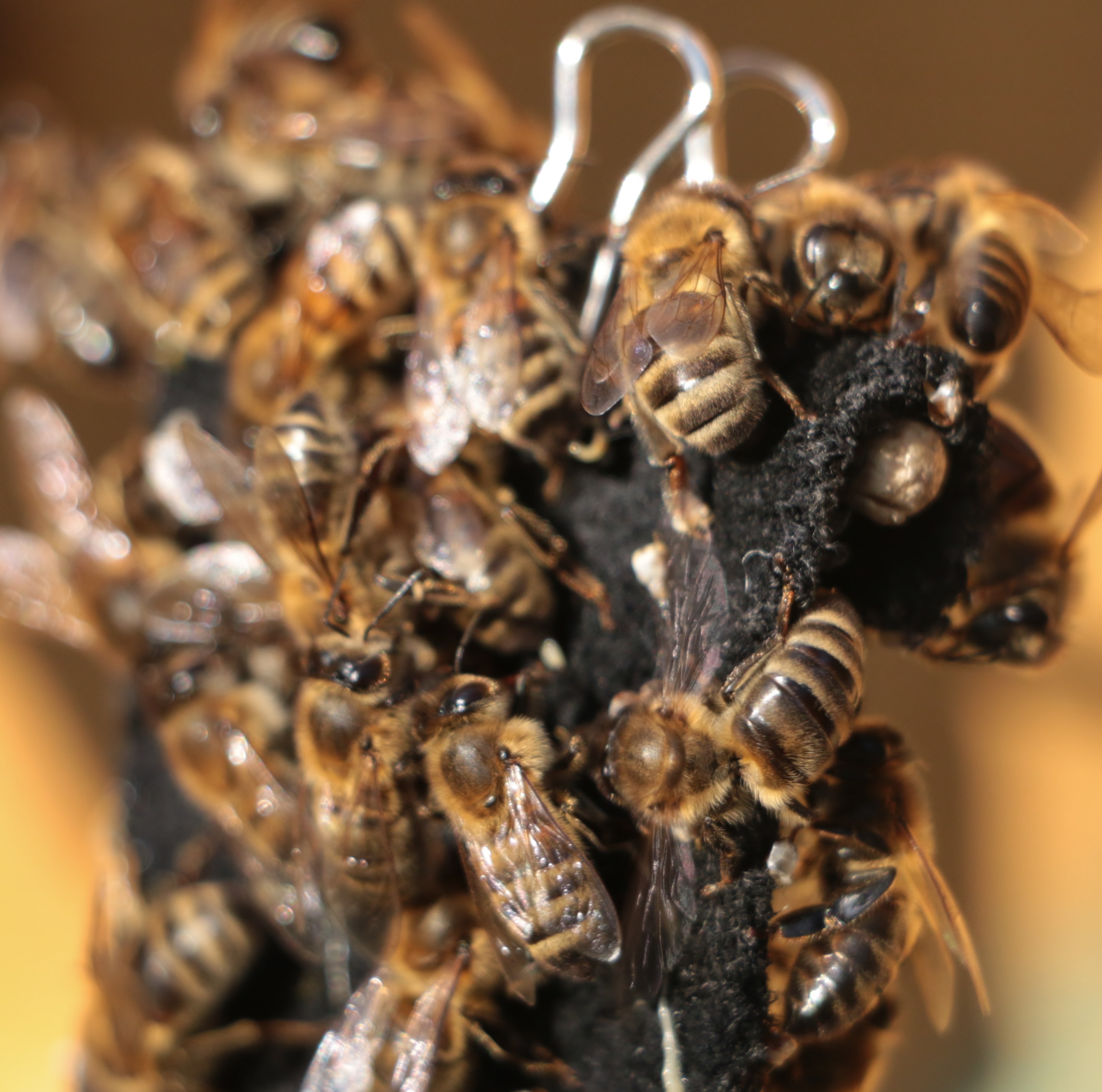Flower Aroma Is a Honeybee's Chill Pill

Music has charms to soothe a savage breast. And, it seems, flowers can calm an aggressive honeybee.
Scientists in France and Australia have found that angry honeybees are less likely to attack when exposed to certain floral scents, such as lavender, associated with the promise of food. This occurs even when the bees are provoked into releasing odorous pheromones that recruit other bees into a stinging attack.
The reason appears to be that the bees would rather feast than fight, the researchers said. The bees respond more strongly to the smells related to gathering food than to pheromones calling for war. [Images Reveal Honeybee Scouts Searching for Food]
The research provides insight into how chemical signals affect honeybees' decision-making, and may also have a practical application in helping beekeepers maintain calm in their hives.
Social bees
The complex social organization and elaborate communication system of honeybees are well-known. Any given hive, or colony, will have a single queen bee, many drone bees that mate with the queen, and a multitude of worker bees assigned very specific tasks, such as foraging, cleaning the hive and protecting the hive.
The worker bees that guard the hive tend to be the most aggressive of the colony, research has shown. When threatened, perhaps by an invading wasp or an intruding human hand reaching for honey, these bees will emit a scent called a sting-alarm pheromone. When other bees in the immediate area catch whiff of this pheromone, they, too, become agitated and prepare to attack the intruder.
Get the world’s most fascinating discoveries delivered straight to your inbox.
But aggression can come at a cost. The worker honeybee will die after using its stinger on a fleshy animal such as a bear or human, because the stinger is torn loose from the bee's body during the attack.
Angry bees?
To better understand this decision to sting, scientists created an experiment that exposed honeybees to various kinds of odors while a rotating, feathery object agitated the insects. The research was led by Martin Giurfa at the University of Toulouse in France and Judith Reinhard of the University of Queensland in Brisbane, Australia.
As expected, when the bees caught whiff of the attack pheromone, they stung the feathery object. Yet, when exposed to scents such as lavender — even in combination with the sting-alarm pheromone and with the menacing feather constantly brushing them — the bees restrained themselves from attack. The soothing effect of "flower power" was directly related to the appeal of the odor: The more appetizing the odor, the greater its ability to thwart or postpone an attack. [Video: Watch Angry Honeybees Calm Down from Flowery Scents]
Most surprising, Giurfa said, was that newly emerged bees that were raised in different environments — in France and in Australia — responded similarly to odors. This implies that the calming affect is an innate characteristic, he said. Other floral odors used in the experiment were linalool and 2-phenylethanol. [Beautiful Begonias: See Amazing Photos of Flowers]
The power of scents
While the result is important for understanding the effects of chemical signaling at a neurological level, the finding may have direct value for beekeepers.
"We certainly see great potential for applications to beekeeping," said Morgane Nouvian, first author on the report published today (Dec. 22) in the journal Nature Communications, and a graduate student at the University of Queensland and at the Paul Sabatier University, part of the University of Toulouse.
"Developing a product based on our results — for example a scented hand spray [or] cream, or an odor-releasing device to place at the hive entrance — could certainly help reduce the number of bees stinging while [beekeepers are] handling the hives. This method would be a great alternative to the current use of smoke and repellents, because we would be tricking the bees with something that they actually 'like,' and it would thus likely be less stressful for them," Nouvian added.
Giurfa said his research team subsequently tested these results in the field, applying odors to the front of a beehive. The calming odors reduced the aggressiveness of the bees, which had been agitated by a jiggling flag at the hive entrance.
The researchers said the results cannot translate directly to the effect of odors on humans. There is anecdotal evidence that lavender has a calming effect on people, but this is likely coincidental to the discovery in bees and, if the effect is real, relies on a different biological mechanism, the scientists said.
"The question of whether humans really have a pheromone communication system remains open, in my opinion," Giurfa told Live Science.
Follow Christopher Wanjek @wanjekfor daily tweets on health and science with a humorous edge. Wanjek is the author of "Food at Work" and "Bad Medicine." His column, Bad Medicine, appears regularly on Live Science.
Follow us @livescience, Facebook & Google+. Original article on Live Science.

Christopher Wanjek is a Live Science contributor and a health and science writer. He is the author of three science books: Spacefarers (2020), Food at Work (2005) and Bad Medicine (2003). His "Food at Work" book and project, concerning workers' health, safety and productivity, was commissioned by the U.N.'s International Labor Organization. For Live Science, Christopher covers public health, nutrition and biology, and he has written extensively for The Washington Post and Sky & Telescope among others, as well as for the NASA Goddard Space Flight Center, where he was a senior writer. Christopher holds a Master of Health degree from Harvard School of Public Health and a degree in journalism from Temple University.


